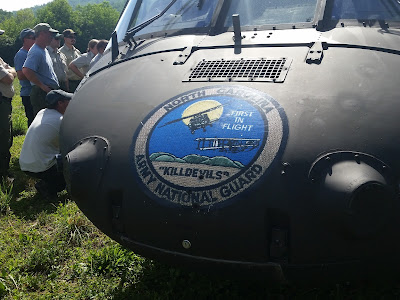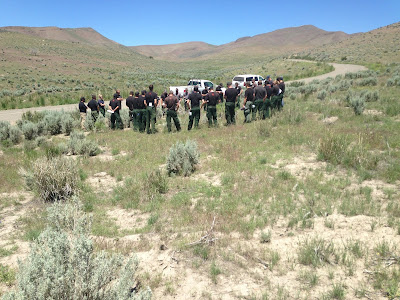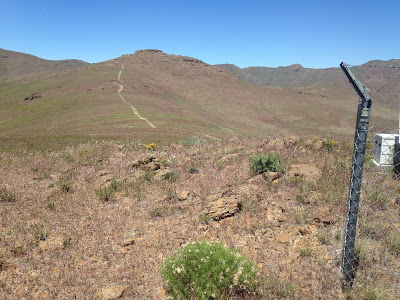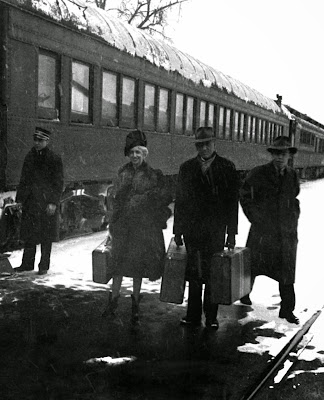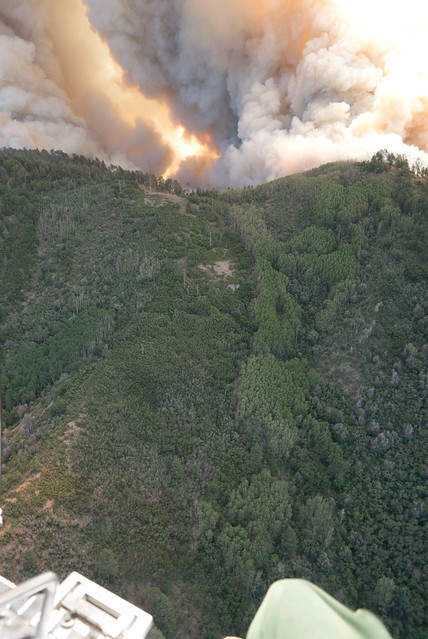 |
| Aerial ignitions on the Silver fire, Gila NF, 2013. |
In a
previous blog, I talked about a fire book that helped shape my firefighting worldview, and kind of served as a "gateway" that changed how I looked at things. Another book that really made me think long and hard about this job is
No Shortcuts to the Top by Ed Viesturs and David Roberts. While it's not a book about fire, and it's not on leadership per se, it's filled with a lot of ideas and concepts that are good for personal development. Personal development is part of the larger concept of leadership; so I guess in a roundabout way, it is a leadership book.
For those who haven't read the book, it's a memoir of sorts about climbing the 14 highest peaks in the world, one step at a time. High-elevation mountain climbing is a relatively dangerous endeavour, with a multitude of risks ranging from rockfall, frostbite, avalanche, and a bevy of altitude-related illnesses. The hazards are many, and the risk is great.
What I took away from reading it was a new way of looking at risk management, and how I approach the risky behaviors that make up a majority of life as a wildland firefighter. When I first read it, I was a newly qualified helicopter manager and IC type 4 trainee, learning the ropes and starting to think about risk in a whole new light. Before this point in my career, I really hadn't thought too much about risk as it applied beyond my immediate reach. I was comfortable making risk decisions for myself in my own little bubble, as a sawyer or tool swinger, but as I grew professionally, my bubble was expanding to include others. Now my risk decisions would impact more than just me, but would have an effect on those around me. The thought was, and still is, sobering, and caused me to think more deeply about risk in fire and aviation than I had before.
A core concept that runs through the book is the idea that sometimes it's better to trust your instincts and stop and reevaluate when it doesn't feel right, before it's too late. One line from the book in particular has stuck with me ever since I first read it: "You don't know you've made the wrong decision until you get yourself killed doing it. Whereas if you turn around early, you may never know whether you made the right decision or not." While the author is speaking specifically about turning around on a mountain when conditions are dangerous, the concept is easy to transfer to wildland fire. It's easy to second guess the conservative right decision, but you may not get the opportunity to second guess the risky wrong decision in a hazardous environment like fire and aviation. Sometimes it's easiest to choose the dangerous route, and more difficult to step back and say "hold on a second, something isn't right," especially in our can-do culture.
Another risk related concept that Viesturs mentions a few times is one I didn't learn to fully appreciate until a few years after I first read the book. It's the idea of risk tolerance, that my levels of acceptable risk are different from those of others. A perfect example is driving. I am (mostly) a defensive driver; I rarely speed, and almost never break traffic laws. My level of tolerance for the risks of driving are pretty low, and that's okay. Others have higher tolerance for those risks, and drive faster, more aggressively, etc., and that's okay too. How we view risk changes our behavior, for better and worse. What's risky to me may not be risky to someone else, and what may be acceptable risk for me could be completely unacceptable to someone not familiar with the task. Advanced sawyers (C fallers) routinely tackle trees that would be incredibly risky for me to try and cut down; and yet because they have a different skill level (and better training, more experience, etc), it's not as risky for them as it would be for me.
There were other things I thought about as well, as I read my way through the Himalyas with the author. Themes like making your own decisions, and not giving in to peer pressure are constant throughout the book. Viesturs again: "On Everest, or any mountain, you've got to make your own decisions." True words indeed, and ones that really gave me pause as I started to venture out on my own in terms of leadership, transitioning from being a crewmember, following orders somewhat blindly at times, to a new leader who was making decisions that mattered. There are times, of course, when your peers are right, and peer pressure can work in your favor, but it's good to remember that the herd mentality doesn't have to influence how you make decisions.
Another theme in the book that ties in well with wildland fire is that of perseverance, of hard work, and putting up with misery to reach your goals. High elevation mountaineering is by all accounts miserable, and filled with hardship. The key is to keep going, one step at a time, towards your goal. Realize that it's not a sprint, but a marathon, and keep a steady pace. Wildland fire, whether viewed through the lens of a single fire or a 25-year career, is all about perseverance, putting in one more chain to the top. It's about hard work, and slow, steady progress toward a goal, no matter how miserable it can be along the way.
Finally, there's the quintessential quote from the book, and it's one that I think we can apply to fire fairly easily. "Getting to the top is optional, getting down is mandatory." The way I look at it, applied to fire, it can mean that engaging fire is optional; but coming home safely shouldn't be. Fight fire aggressively, but make sure that bringing everyone home safely is what drives your decision making.
Until next time...
****************************************************************
Justin Vernon is a regular contributor on our blog. Justin works for the United States Forest Service and is a member of the NWCG Leadership Subcommittee as steward of the Professional Reading Program. Check out his Chasing Fire blog. All expressions are those of the author.




